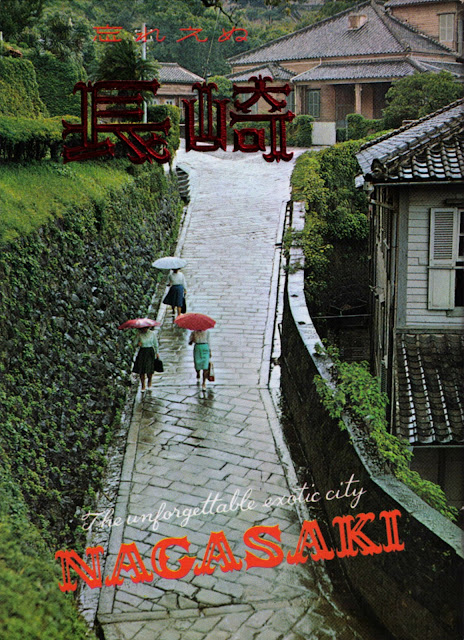The kirin (qilin) is a mythical animal of Chinese origin, half horse and half dragon, a harbinger of good fortune and world harmony said to appear in conjunction with the arrival and death of great personages. Mention of it can be traced back in literature and art to the 5th century BCE. The figure and the meaning attached to it probably reached Japan on one of the ships carrying news of Chinese Buddhism, architecture and kanji written script about a millennium later.
 |
| The kirin engraved on a transom at the Nishihonganji Head Temple in Kyoto. |
 |
| Illustration of a kirin in the notes of German physician Engelbert Kaempfer, who served as chief surgeon at the Dutch East India Company factory on Dejima in Nagasaki from 1690 to 1692. |
In present-day Japan, however, the kirin is better known for the animal portrayed on the labels of Kirin Beer Company products than for any traditional artistic representation. Kirin Beer also has a rather garbled Nagasaki connection, discussed below.
The Japan Brewery Company, predecessor of Kirin Beer Company, was founded in Yokohama in 1885 and began production of its signature "Kirin Beer" in 1888. The main mover was Scottish entrepreneur Thomas B. Glover (1838-1911), whose famous house is preserved today in Nagasaki's Glover Garden. Glover exercised his considerable entrepreneurial skills in scouting German brewmasters, drumming up investments from both foreign and Japanese residents, and turning beer into a beverage as popular as sake and shochu in Japanese drinking establishments.
How Thomas Glover and his colleagues came up with the kirin to serve as a company symbol, however, remains a mystery. Nothing can be found in company records to shed light on the question. The original label illustration and related documents have also been lost, apparently in the Great Kanto Earthquake of 1923. All we have, therefore, is conjecture.
One unconfirmed theory states that the bushy mustache shown on the animal of the label -- a feature absent in illustrations of the traditional kirin -- was inspired by Glover's trademark mustache and was added as an expression of respect. But even if that is true, it does not answer the fundamental question as to why and under what circumstances the kirin was chosen as a company symbol.
Another theory has it that the pair of stone komainu (guardian dogs) currently on display in the former Glover House in Nagasaki served as models. In fact the sign beside the statues states in rather definite terms that this is so. Several years ago your writer was asked to translate the sign. I stealthily added the word "perhaps" to the English text because I suspected, correctly as it would turn out, that there is no proof for the supposed connection between the statues and the famous beer. In fact, not only is there nothing to show that Glover referred to the statues in choosing a logo for his beer, there is no record as to how the statues ended up in his house in the first place. Someone just threw out a guess, and it stuck to the wall.
So, let's join in the guessing game. Fuller’s Brewery, the producer of London Pride and other popular British brands, has been operating in the Chiswick suburb of West London since 1845. The company emblem is the griffin, a legendary creature of European origin similar to the kirin in use and meaning but combining a lion with an eagle instead of a dragon with a horse. Perhaps Thomas Glover or one of his British colleagues 1) remembered the griffin when looking around for a name, 2) heard from Japanese friends that Japan and China had something remarkably similar, and 3) decided to use the kirin as a trademark. This is pure conjecture, but it seems far more plausible than the guardian dogs.
 |
| The insignia of Fuller's Brewery, showing the griffin symbol. |








